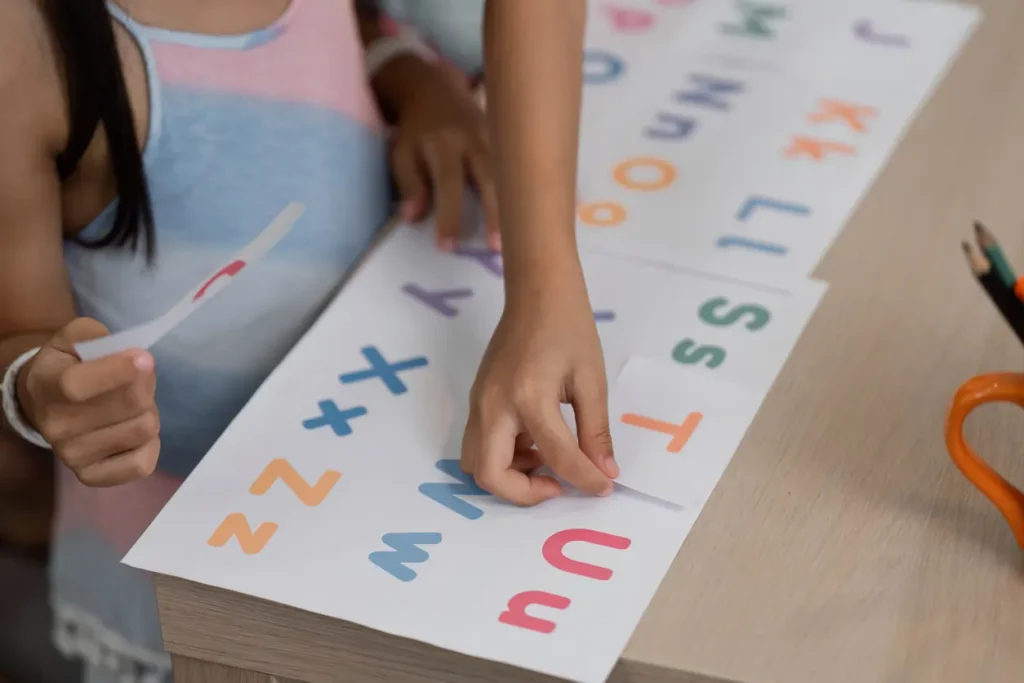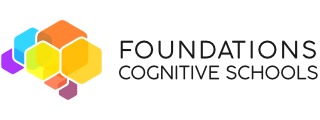
Story at-a-glance
- Early identification makes a crucial difference – Spotting potential learning disabilities in preschoolers allows for early intervention that can dramatically improve outcomes and prevent secondary emotional and behavioral issues.
- Signs often look like normal developmental variation – Many early indicators of learning disabilities can be mistaken for typical preschooler behavior, making it important to understand when delays or differences warrant closer attention.
- Multiple areas may show subtle signs – Warning signs can appear across language development, motor skills, social interactions, and pre-academic abilities, often in patterns rather than isolated incidents.
- Trust your parental instincts – While avoiding unnecessary worry, parents who consistently notice their child struggling compared to peers should seek professional guidance rather than waiting to “see what happens” in kindergarten.
As a parent, you want to give your preschooler every possible advantage in life, but sometimes it’s hard to know when typical developmental quirks might signal something more significant. The line between normal variation and potential learning disabilities can be particularly blurry during the preschool years, when children are developing at vastly different rates and in different ways.
The good news is that early identification of learning disabilities, when they exist, can make an enormous difference in your child’s long-term success. The earlier appropriate support begins, the better equipped your child will be to develop compensatory strategies and build confidence before academic demands intensify.
Understanding what to look for – and what not to worry about – can help you make informed decisions about when to seek professional guidance and how to best support your child’s development during these crucial early years.
Why Early Identification Matters
The preschool years represent a critical window for brain development. During this time, neural pathways are forming rapidly, and the brain shows remarkable plasticity – the ability to adapt and rewire itself in response to experience and intervention. This means that appropriate support during the preschool years can have lasting positive effects that extend far beyond early childhood.
Early identification also helps prevent secondary issues that often develop when learning disabilities go unrecognized. Children who struggle academically without understanding why often develop anxiety, low self-esteem, behavioral problems, or school avoidance. When learning differences are identified and addressed early, children can develop a positive sense of themselves as learners who simply need different approaches to succeed.
Additionally, early intervention services are often more readily available and less stigmatizing for preschoolers than for school-age children. Many communities offer developmental preschool programs, speech and language services, and occupational therapy specifically designed for young children with learning differences.
Language and Communication Red Flags
Speech and Language Development Delays
Language development is one of the most important areas to monitor during the preschool years, as early language skills form the foundation for later reading and academic success. While children develop language at different rates, certain patterns may warrant professional evaluation.
By age three, most children should be speaking in sentences of three to four words, asking simple questions, and being understood by strangers most of the time. If your preschooler is still primarily communicating with single words, gestures, or unclear speech that family members struggle to understand, this could indicate a language processing difference.
Pay attention to your child’s ability to follow directions. A three-year-old should be able to follow two-step instructions like “Get your shoes and put them by the door.” Four-year-olds should manage more complex directions and be able to answer simple questions about stories or recent events.
Vocabulary and Word Retrieval Issues
Some children with emerging learning disabilities have smaller vocabularies than their peers or struggle to find the words they want to use. You might notice your child frequently using vague words like “thing” or “stuff” instead of specific names for objects, or they might describe items in roundabout ways because they can’t retrieve the exact word.
Word retrieval difficulties can be particularly noticeable during storytelling or when your child is excited and trying to share something important. They might know exactly what they want to say but struggle to access the specific words, leading to frustration for both child and parent.
Phonological Awareness Challenges
Phonological awareness – the ability to hear and manipulate the sounds in words – is a crucial precursor to reading success. Preschoolers should gradually develop the ability to recognize rhyming words, clap out syllables, and identify beginning sounds in familiar words.
If your four-year-old consistently struggles with nursery rhymes, can’t seem to grasp simple rhyming games, or has difficulty recognizing that “bat” and “cat” sound similar, this might indicate emerging reading-related learning differences. Similarly, difficulty breaking words into syllables or recognizing when words start with the same sound can be early warning signs.
Pre-Academic Skill Concerns
Letter and Number Recognition Difficulties
While preschoolers aren’t expected to read or do complex math, most four-year-olds show interest in letters and numbers and begin recognizing some of them, especially the letters in their own name. If your child seems completely uninterested in print, can’t recognize any letters after repeated exposure, or consistently confuses similar-looking letters well into their fourth year, this might warrant attention.
However, it’s important to note that occasional letter reversals are completely normal in preschoolers. The concern arises when these confusions persist despite regular exposure and practice, or when they’re accompanied by other learning-related difficulties.
Drawing and Fine Motor Challenges
Drawing and fine motor development can provide insights into your child’s emerging academic readiness. By age four, most children can draw recognizable people with heads, bodies, and limbs. They should be able to copy simple shapes like circles and squares, and their grip on crayons or markers should be becoming more mature.
Children who continue to have very immature pencil grips, struggle to copy simple shapes, or produce drawings that look significantly younger than their chronological age might be showing early signs of fine motor or visual-perceptual challenges that could affect later writing and academic skills.
Pre-Math Concept Difficulties
Mathematical thinking begins early with concepts like counting, one-to-one correspondence, and basic spatial relationships. Most four-year-olds can count to ten, understand “more” and “less,” and recognize basic shapes. They should be able to sort objects by simple attributes like color or size and understand concepts like “big” and “small” or “first” and “last.”
If your preschooler consistently struggles with these foundational concepts despite regular exposure and practice, this might indicate emerging math-related learning differences. However, remember that mathematical thinking develops gradually, and some children simply need more time and different approaches to grasp these concepts.
Social and Emotional Warning Signs
Difficulty with Social Interactions
Some learning disabilities affect social processing and interaction skills. You might notice your preschooler has trouble reading social cues, understanding facial expressions, or knowing how to join play activities with other children. They might consistently misinterpret social situations or have difficulty understanding unspoken social rules.
While shyness is normal, persistent difficulty with social interactions that seems disproportionate to your child’s personality or experience might indicate underlying language processing or social communication challenges.
Emotional Regulation Struggles
Children with emerging learning disabilities sometimes have more difficulty with emotional regulation than their peers. This might manifest as frequent meltdowns that seem disproportionate to the situation, extreme frustration with tasks that should be manageable for their age, or unusual anxiety around new activities or learning situations.
It’s important to distinguish between typical preschooler emotional development, which naturally includes tantrums and big feelings, and patterns that suggest underlying processing difficulties that make daily tasks feel overwhelming.
Attention and Focus Concerns
While preschoolers naturally have shorter attention spans than older children, some patterns might indicate emerging attention-related challenges. This could include extreme difficulty sitting still for age-appropriate activities, inability to focus on preferred activities for reasonable periods, or seeming not to hear when spoken to directly.
However, be cautious about assuming attention difficulties in preschoolers, as active, curious behavior is typically healthy and normal. The concern arises when attention challenges significantly interfere with learning, social interactions, or daily functioning across multiple settings.
Motor Development Red Flags
Gross Motor Delays
Large muscle development affects not only physical activities but also academic readiness. Most preschoolers should be able to run, jump, climb playground equipment, and ride tricycles. They should be able to walk up and down stairs alternating feet and catch a large ball with some success.
Persistent clumsiness, frequent falls, difficulty with playground equipment that peers manage easily, or reluctance to participate in physical activities might indicate motor planning or coordination challenges that could affect later academic skills.
Fine Motor and Visual-Motor Integration Issues
Fine motor skills and visual-motor integration – the ability to coordinate what you see with hand movements – are crucial for later writing success. Preschoolers should gradually develop better control over small movements and begin to integrate visual information with motor actions.
Difficulty with puzzles, building blocks, or art activities that require visual-motor coordination might indicate emerging challenges. Similarly, extreme difficulty with self-care tasks like buttoning clothes, using utensils, or zipping jackets might suggest fine motor delays.
Memory and Processing Speed Indicators
Working Memory Challenges
Working memory – the ability to hold information in mind while working with it – can be difficult to assess in preschoolers but sometimes shows up in subtle ways. A child might forget multi-step directions immediately after hearing them, lose track of what they were doing in the middle of activities, or have difficulty following sequences in stories or songs.
These challenges might be mistaken for attention problems, but they’re actually about the brain’s capacity to hold and manipulate information temporarily while completing tasks.
Processing Speed Differences
Some children process information more slowly than their peers, which can become apparent during preschool activities. They might need extra time to respond to questions, seem to be “still thinking” when others have moved on, or appear overwhelmed when information is presented quickly.
Slow processing isn’t necessarily problematic if children eventually reach appropriate conclusions, but it can affect their ability to keep up with group activities and might indicate the need for accommodations in more structured learning environments.
When Normal Variation Becomes Concerning
Persistent Patterns Across Settings
One key factor in determining whether behaviors warrant concern is whether they occur consistently across different settings. A child who struggles only at home or only at preschool might be responding to specific environmental factors rather than dealing with underlying learning differences.
However, if you notice similar patterns of difficulty at home, preschool, with babysitters, and in other settings, this might indicate more fundamental processing differences that deserve professional attention.
Comparison with Developmental Milestones
While every child develops differently, significant delays in multiple areas or persistent difficulty with skills that most peers have mastered might indicate learning differences. It’s helpful to be familiar with typical developmental milestones while remembering that these are guidelines rather than rigid timelines.
If your child is consistently six months to a year behind in multiple developmental areas, or if they’re making very slow progress despite appropriate exposure and support, professional evaluation might be helpful.
Family History Considerations
Learning disabilities often run in families, so family history can be an important factor to consider. If you or your partner had learning difficulties, reading problems, speech delays, or needed special education services, your child might be at higher risk for similar challenges.
This doesn’t mean your child will definitely have learning disabilities, but it might lower the threshold for seeking evaluation if you notice concerning patterns.
What Not to Worry About
Normal Developmental Variation
Many behaviors that worry parents are actually completely normal parts of preschool development. Occasional letter reversals, difficulty with complex instructions, resistance to new activities, and variable attention spans are all typical for preschoolers.
The key is looking for persistent patterns rather than isolated incidents. One difficult day, week, or even month doesn’t indicate learning disabilities – children go through natural phases of development that can include temporary regression or difficulty.
Individual Learning Styles
Some children are naturally more visual learners, others learn better through movement, and still others prefer auditory instruction. These learning style differences don’t indicate disabilities – they simply mean children benefit from different approaches to learning.
A child who learns better through hands-on activities rather than sitting and listening isn’t showing signs of learning disabilities; they’re demonstrating their natural learning preferences.
Taking Action: When and How to Seek Help
Trusting Your Instincts
As a parent, you know your child better than anyone else. If you have persistent concerns about your child’s development, even if others tell you not to worry, it’s reasonable to seek professional guidance. Early evaluation can either provide reassurance that development is within normal limits or identify areas where support might be helpful.
Remember that seeking evaluation doesn’t commit you to any particular course of action – it simply provides information that can help you make informed decisions about supporting your child’s development.
Starting with Your Pediatrician
Your child’s pediatrician is often a good first step for discussing developmental concerns. They can help determine whether your observations warrant further evaluation and can provide referrals to appropriate specialists if needed.
Many pediatricians can also connect you with early intervention services in your community, which are often available at no cost for preschoolers who qualify.
Early Intervention and Preschool Services
Most communities offer developmental evaluations and early intervention services for preschoolers. These services are designed to support children who are experiencing developmental delays or are at risk for learning difficulties.
Even if your child doesn’t qualify for intensive services, many programs offer parent education, developmental screenings, and guidance that can be helpful for families navigating early childhood development.
Supporting Your Preschooler at Home
Creating Language-Rich Environments
Regardless of whether your child has learning differences, creating a language-rich home environment supports healthy development. This includes reading together daily, having conversations about everyday activities, singing songs, and playing word games.
Focus on making these activities enjoyable rather than educational tasks. The goal is to foster a love of language and learning rather than to drill specific skills.
Following Your Child’s Interests
Children learn best when they’re engaged and interested. Pay attention to what naturally captures your child’s attention and build learning opportunities around those interests. A child fascinated by dinosaurs might be more motivated to practice counting with dinosaur toys or listen to books about prehistoric life.
Providing Appropriate Challenges
Offer activities that are challenging enough to promote growth but not so difficult that they become frustrating. This “just right” level of challenge helps children develop confidence and persistence while building new skills.
Looking Forward with Hope
If your preschooler is showing some early warning signs, remember that early identification is actually a positive development. It means you can provide appropriate support during the most crucial years for brain development and skill building.
Many children who receive early support go on to succeed academically and personally. Learning disabilities don’t define your child’s potential – they simply mean your child might need different approaches or additional support to reach their goals.
The preschool years are about building foundations for later learning, developing confidence and curiosity, and fostering a positive relationship with learning itself. Whether or not your child has learning differences, these goals remain the same.
Your awareness, advocacy, and support during these early years can make an enormous difference in your child’s long-term success and happiness. Trust your instincts, seek guidance when needed, and remember that every child has unique strengths and challenges that make them who they are.
Early warning signs are exactly that – warnings that allow you to take proactive steps to support your child’s development. With understanding, appropriate support, and your unwavering belief in your child’s potential, they can develop the skills and confidence they need to thrive in school and beyond.
Sources
- National Association for the Education of Young Children. (2023). “Developmentally Appropriate Practice in Early Childhood Programs.” Retrieved from https://www.naeyc.org/resources/position-statements/dap
- Fletcher, J. M., Lyon, G. R., Fuchs, L. S., & Barnes, M. A. (2018). Learning Disabilities: From Identification to Intervention (2nd ed.). Guilford Press.
- Early Childhood Technical Assistance Center. (2022). “Early Identification and Intervention.” Retrieved from https://ectacenter.org/
- American Speech-Language-Hearing Association. (2023). “Preschool Language Disorders.” Retrieved from https://www.asha.org/practice-portal/clinical-topics/spoken-language-disorders/
- Lonigan, C. J., & Phillips, B. M. (2016). Response to instruction in preschool: Results of two randomized studies with children at significant risk of reading difficulties. Journal of Educational Psychology, 108(1), 114-129.
Note: This blog post is intended for educational purposes only. While the information presented is based on scientific research, individual situations vary. Please consult with qualified professionals for proper assessment and individualized recommendations.



